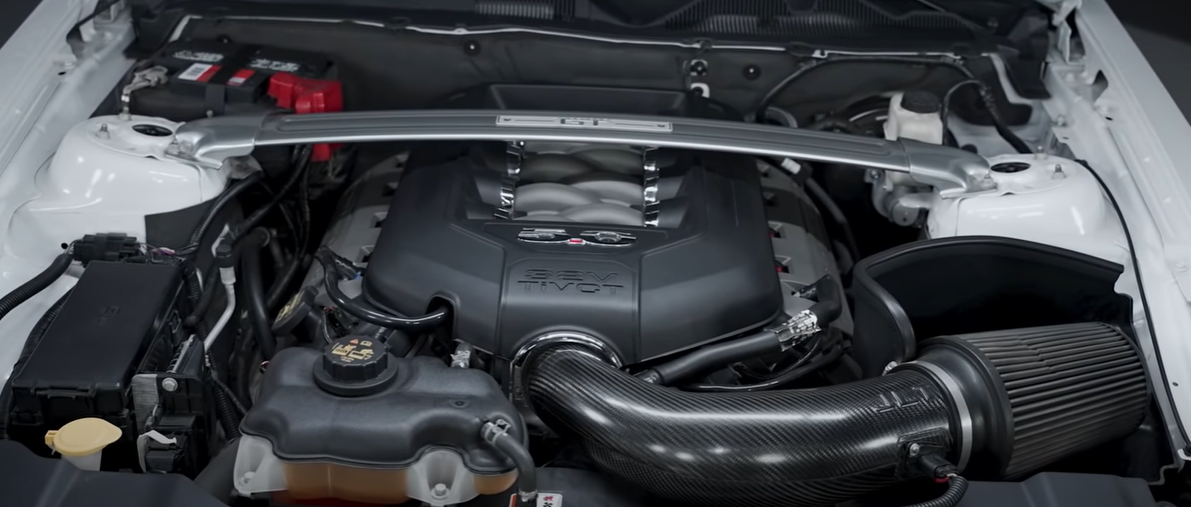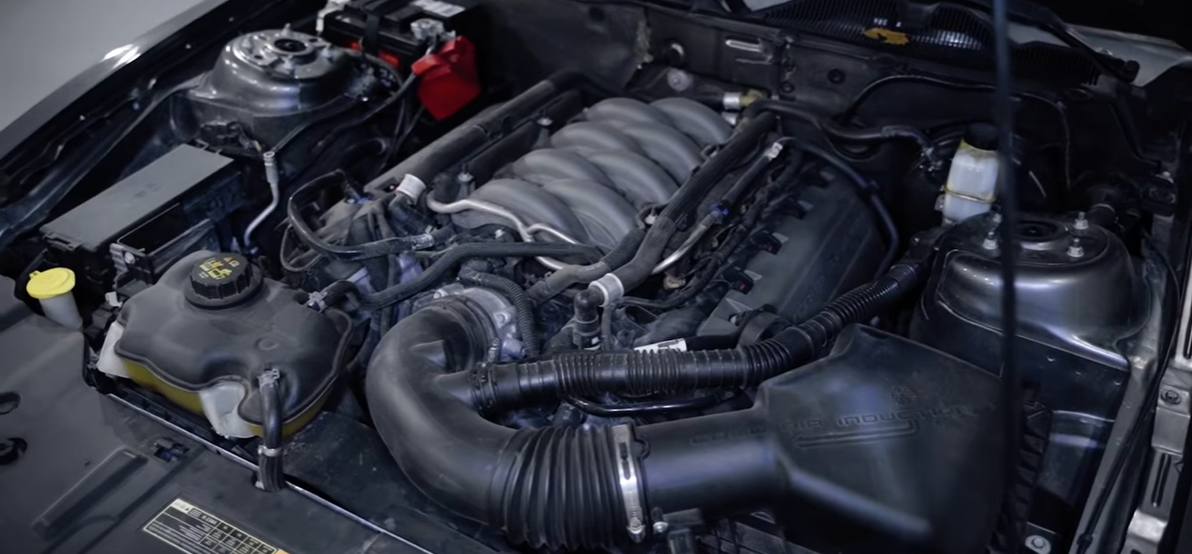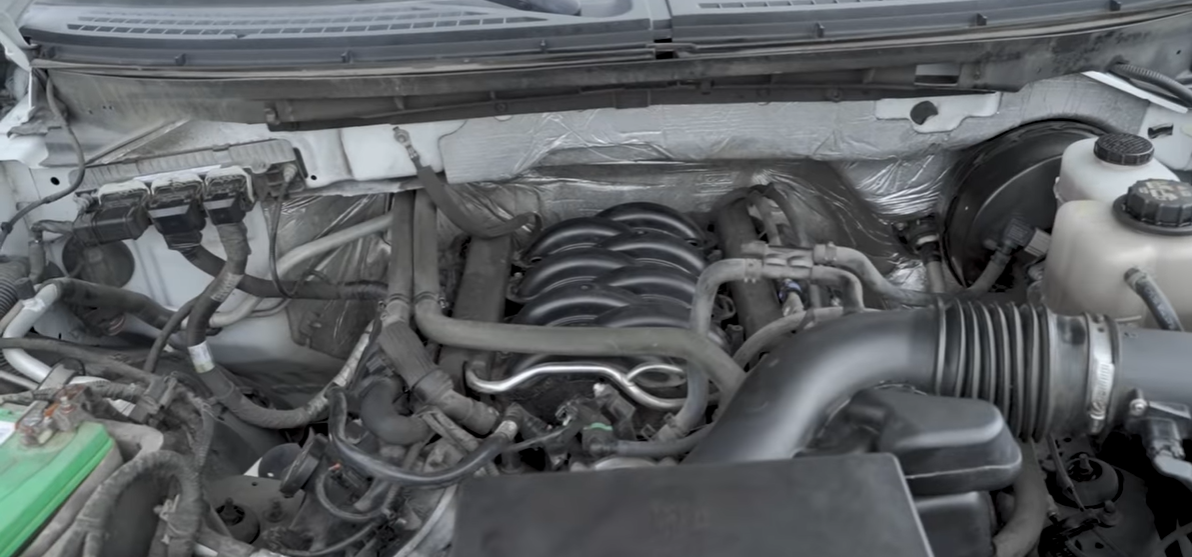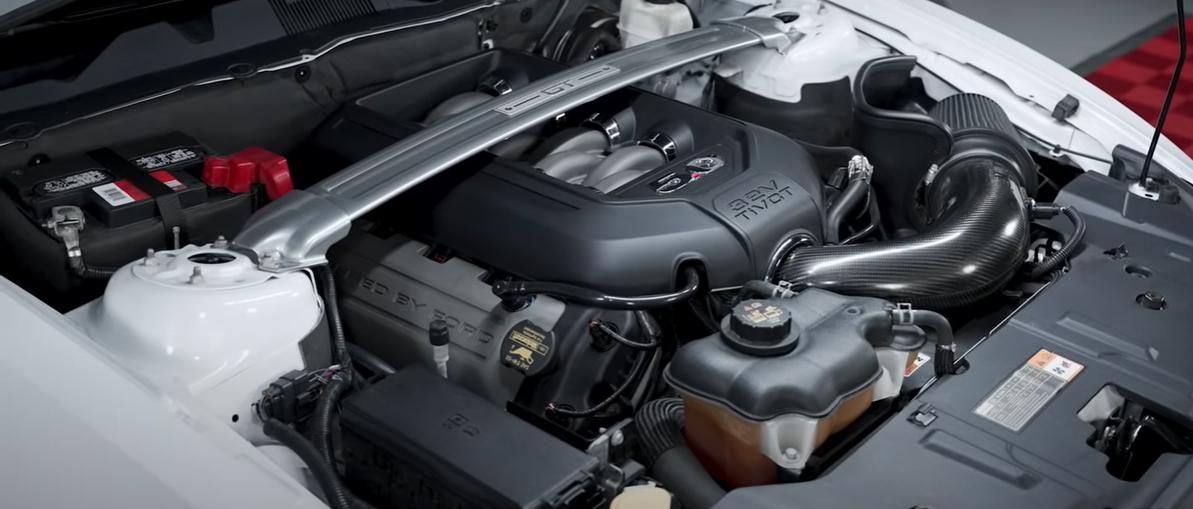Mustang vs F-150 Gen 1 Coyote Engine: What’s the Difference?

Gen 1 Coyote engine was used in both the Mustang GT and the F-150. Which should you choose for an engine swap?
Currently Ford is on the third generation of the beloved Coyote engine. But to get to the third generation, you obviously must start somewhere. That somewhere was the first generation that debuted in the 2011 Mustang GT and F-150. They may both be referred to as a Coyote but there are some key differences. Doing a Coyote V8 engine swap is a common practice and a good way to boost performance. If you are looking for one for your project vehicle, you may want to understand how they differ from pony car to truck applications.
Landan Durham from Late Model Restoration hosts a video posted to their YouTube channel. This video examines the differences in the first-generation Coyote engines. Durham also takes a look at the Road Runner version used in the Boss 302. These engines may all be in the same family but have distinct personalities. But before we get to the differences, let’s talk about the Coyote name. An email survey at Ford was sent out looking for name suggestions.
John Norcott, who was a Ford V8 engine planner replied. He came up with “Coyote” because it originated with A.J. Foyt’s race team. Ford’s main goal for the Coyote was performance, so they liked the idea of it being linked to a high rpm Indy engine.
First Mustang Coyote
The original configuration of the Coyote engine can be found in the 2011 and 2012 Mustang GT. For the 2013 and 2014 model years there were a few subtle changes that we will get to in a bit. In the 2011 Mustang GT the Coyote 5.0 was rated at 412 horsepower and 390 pound-feet of torque. The engine featured a cast aluminum block and cylinder heads. It also had something called “TiVCT.” “One of the marketing tools for this engine was Ford’s TiVCT. Which stands for twin independent variable cam timing.” Explains Durham. The displacement of this engine was technically 4.951L. However, having a 4.951 badge on the side of a Mustang was not going to fly. So, smidge of a mathematical roundup gave us the 5.0.

Gen 1.1 Mustang Coyote
For 2013 the Coyote in the Mustang GT got a few subtle tweaks. “Ford removed the oil squirters and changed the piston which shared the same coating as the Boss 302 piston.” Says Durham. This engine got a nominal 8 horsepower bump over the earlier versions. It now put out 420 horsepower, but torque remained the same at 390 pound-feet. More power is always welcomed, but it is unlikely that any human could detect an increase that small in a Mustang. But hey, bigger is always better right?
Who’s The Boss?
There was a special edition Coyote engine code named the Road Runner. This engine was developed for the 2012 and 2013 Boss 302. The goal of this engine was to be a high rpm screamer. This engine had forged connecting rods, ported cylinder heads and a unique short runner intake manifold. The Boss engine also used different cams and stiffer valve springs. The engine cranked out an impressive 444 horsepower with a 7,500 rpm redline. Torque did drop a bit to 380 pound-feet due to the short runner intake manifold.
F-150 Coyote

The Coyote engine used in the 2011 – 2014 F-150 did not change over those years unlike the Mustang. The F-150 is quite obviously a truck so the demands of the engine are a bit different. The intake manifold was designed to emphasize torque over top end power. The compression ratio in the F-150 application was 10.5 to 1 rather than 11 to 1 in the Mustang. Another significant change was the F-150 Coyote used cast iron exhaust manifolds versus the stainless steel you would find in the Mustang. The engine was rated at 360 horsepower and 380 pound-feet of torque. So total output is down a bit when compared to the Mustang units. However, overall, there is not a huge difference between the two.
What Engine Is Right For You?
If you are looking to do a Coyote swap, this is a question that only you can answer. One thing you may want to keep in mind is the cost. There are a lot more F-150 Coyote engines out there. If you are looking for an engine, you will likely pay double for the Coyote out of a Mustang as compared to a F-150. You will save some money and really not give up much performance in the trade. The Road Runner version of course would be tops for performance but will cost you an arm and a leg compared to the regular Coyote editions. No matter which option you chose, there is really no bad choice when it comes to putting a Coyote V8 under your hood.
Join the Mustang Source Forums now!

